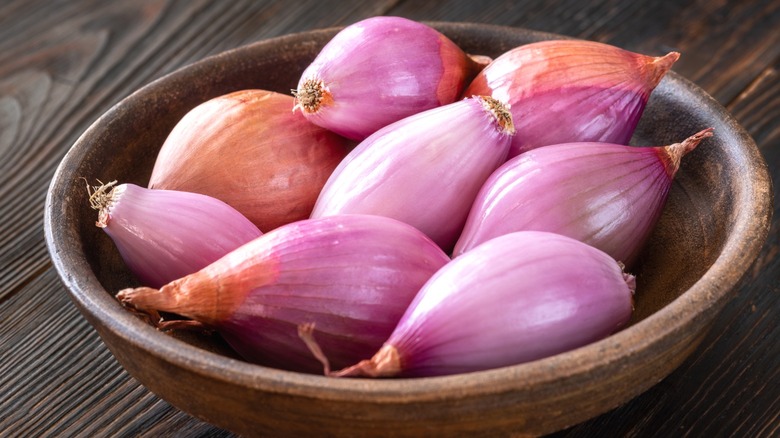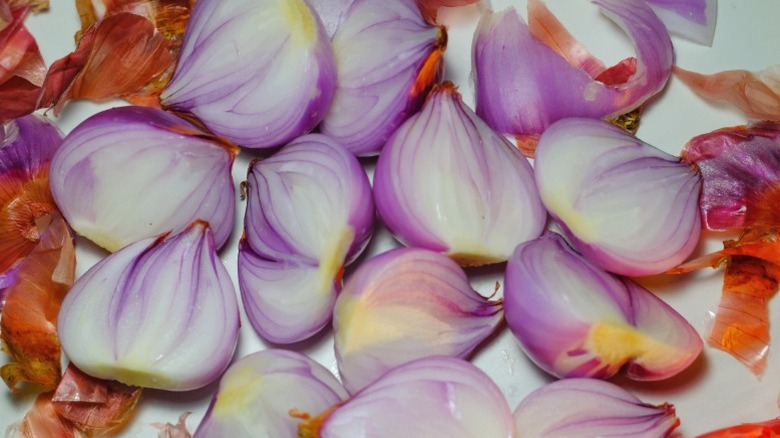The Best Way To Mince Shallots Is Also The Easiest
You might think that shallots are just smaller onions — and to some degree, that's exactly what they are. But while onions and shallots are both members of the allium family, the latter are several times more expensive than the former, due to being much less hardy and more difficult to grow. All this means is that, if you have some of these mild-tasting little beauties on your hands, you'll want to treat them right. But worry not: The best way to cut these onions is also pretty darn easy. We talked to Constantine Delnero, who has the impossibly cool job title of chief blade officer at Seido Knives, and he tells us that all we need is a chef's knife, some cold water, and a bit of technique.
"A well-sharpened chef's knife is your best choice for mincing shallots," Delnero says. "The broadness of the blade as well as the curve are helpful for the controlled rocking motion used for even and fine cuts." As for how you should set about cutting the shallot, Delnero has specific instructions. "Start by cutting the shallot in half from the stem to the root (ensuring that the root stays intact on either half)," he says. "Then, place the flat side on the cutting board and make horizontal cuts (from stem to root) down the length of the shallot (but again, don't cut through the root)." Finish by making vertical cuts perpendicular to the previous cuts. Easy peasy!
Make sure to wash your shallots — and avoid cutting through the root
With that being said, though, the process isn't entirely foolproof. According to Constantine Delnero, it's important to first wash your shallots. "Before you start mincing, rinse your shallot under cold water to remove any remaining dirt," he explains. Nobody wants to bite into a nice salad, even a Pittsburgh Salad with french fries, and taste the residue from whatever farm the ingredients came from, right? In addition, Delnero suggests that you avoid cutting through the root at the end of the shallot. "The root is the part that holds the layers of the shallot together which makes the mincing process easier." You probably remember this piece of advice from mincing onions, and it's just as applicable to its smaller counterpart.
So now that you know how to mince a shallot, how fine do you want that mince? Delnero gives us helpful advice yet again: "If you plan to serve in a dish raw, then a finer mince is recommended to help distribute the flavor more evenly and prevent bites with too much shallot flavor or crunch." This is ideal for something like a salad, or even something like a chimichurri for your steak. However, it's a different story for cooked dishes. "A bigger mince is OK because the shallot will soften during cooking and become more integrated with the other flavors," notes Delnero.

